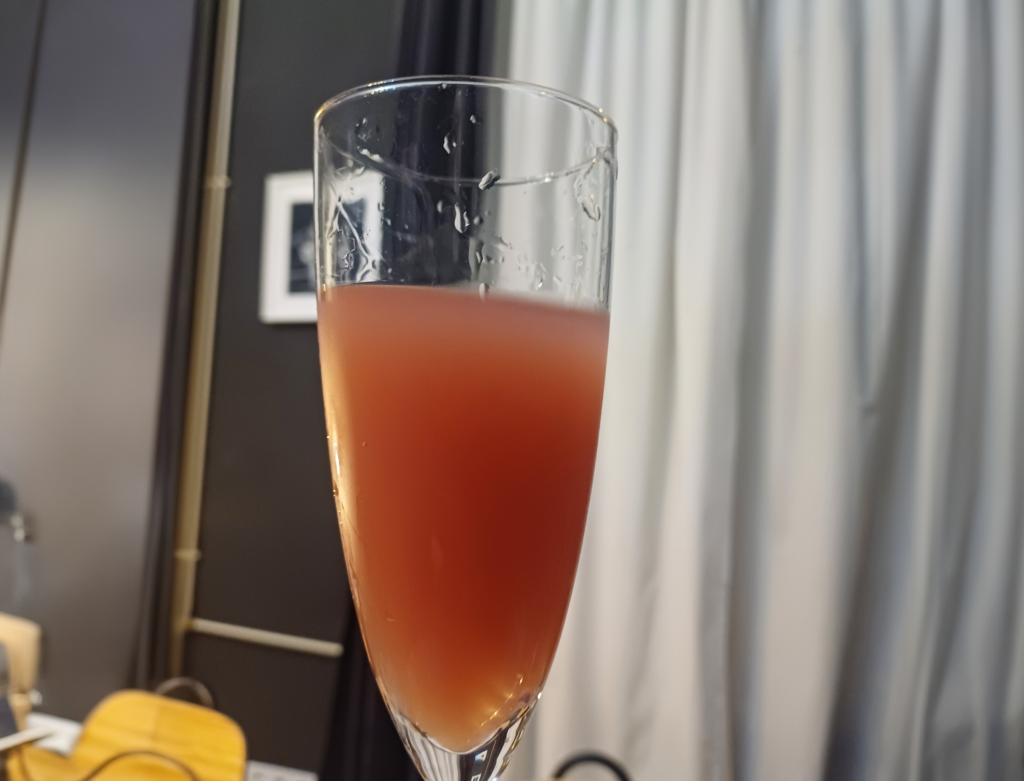
Part five: Sparkling wine – The Ancestral method
I have to confess, I quite like the flavours that yeast imparts to sparkling wine. I know not everyone does, but for me, they add some depth and complexity to the wine which makes it more interesting. But, let’s face it, not every day can be a champagne day. So what is the alternative for someone like me who likes that yeasty, bready flavour? And what might be the perfect transition wine for someone who is normally a drinker of beer perhaps and used to something a bit more yeasty? Well, I’m glad you asked! In my opinion the Ancestral method sparkling wines fit this bill perfectly!
All the flavour, less of the faff
Now judging from the picture at the top of the post you might think that what I am actually suggesting here is some kind of cocktail, because the wine seen in the post is not clear. Or you might think I’m suggesting drinking a bad quality wine, as wine is usually clear, so cloudy wine must mean poor quality. In fact, neither is the case. Ancestral method wines, such as the one in the picture above are actually made slightly differently and that is why they are sometimes cloudy.
So, traditional method wines start with a base wine and then have a secondary fermentation in the bottle. But what if, instead of fermenting the wine to dryness during that initial fermentation, we actually allowed it to ferment only partially? Well in that situation we would retain some yeast and sugar, so when we put it into a bottle. So rather than having to add more yeast and sugar to the wine to induce a secondary fermentation, they would already be in the wine. And the lees (dead yeast) would also be in the bottle ready to impart all that yeasty yumminess to the wine. Eventually, the wine would ferment to dryness, the yeast would die off, and then the lees aging would commence.
Finishing the wine
Now, of course we could take that bottle and riddle it until the sediment drops to the bottom, then disgorge it to get rid of the sediment. In some cases, this is what happens. But if we don’t do that, if we just leave the sediment in the bottle, we get a very different type of sparkling wine. One which is cloudy! Now we can deal with that in two ways. Firstly, we can do our own version of riddling, keeping the bottle almost upside down, allowing the sediment to settle. We can then remove the cap and allow the carbon dioxide to push out the sediment, but stopping the wine from following it by quickly rotating the bottle once the sediment has popped out. Or of course we can allow the sediment to remain, and serve it as is. The answer to which to do is of course down to personal preference, but either way the final wine is going to take on a much more yeasty character.
Now trending
This method of winemaking is actually how sparkling wines were likely made prior to the discovery of things like a second fermentation. Despite technologies and winemaking having moved on, the Ancestral method of wine making has become a lot more popular over the last couple of years. It is quite an affordable way for winemakers to create a sparkling wine, and is a different style. In many cases bottles are riddled and disgorged, which appeals to the more modern sense of having a clearer wine, while retaining some of those brioche, biscuit notes from the yeast contact. The one above, I managed to get direct from the winemaker with only a crown cap on it, prior to disgorging and so it was a lot cloudier.
So if you’re after a more affordable sparkling wine with hints of the sorts of flavours and styles the traditional method produces, maybe an ancestral wine is the way to go. These wines tend to be sold under the French term Pétillant-Naturel, or Pét-Nat. Depending on where in the world you are located, it could be more difficult to source one, but if you get the chance to, its something worth trying at least once. And if you can’t source it where you are, what better excuse do you need to travel somewhere where you can?! In the meantime, keep exploring this beautiful planet we live on, one glass at a time!